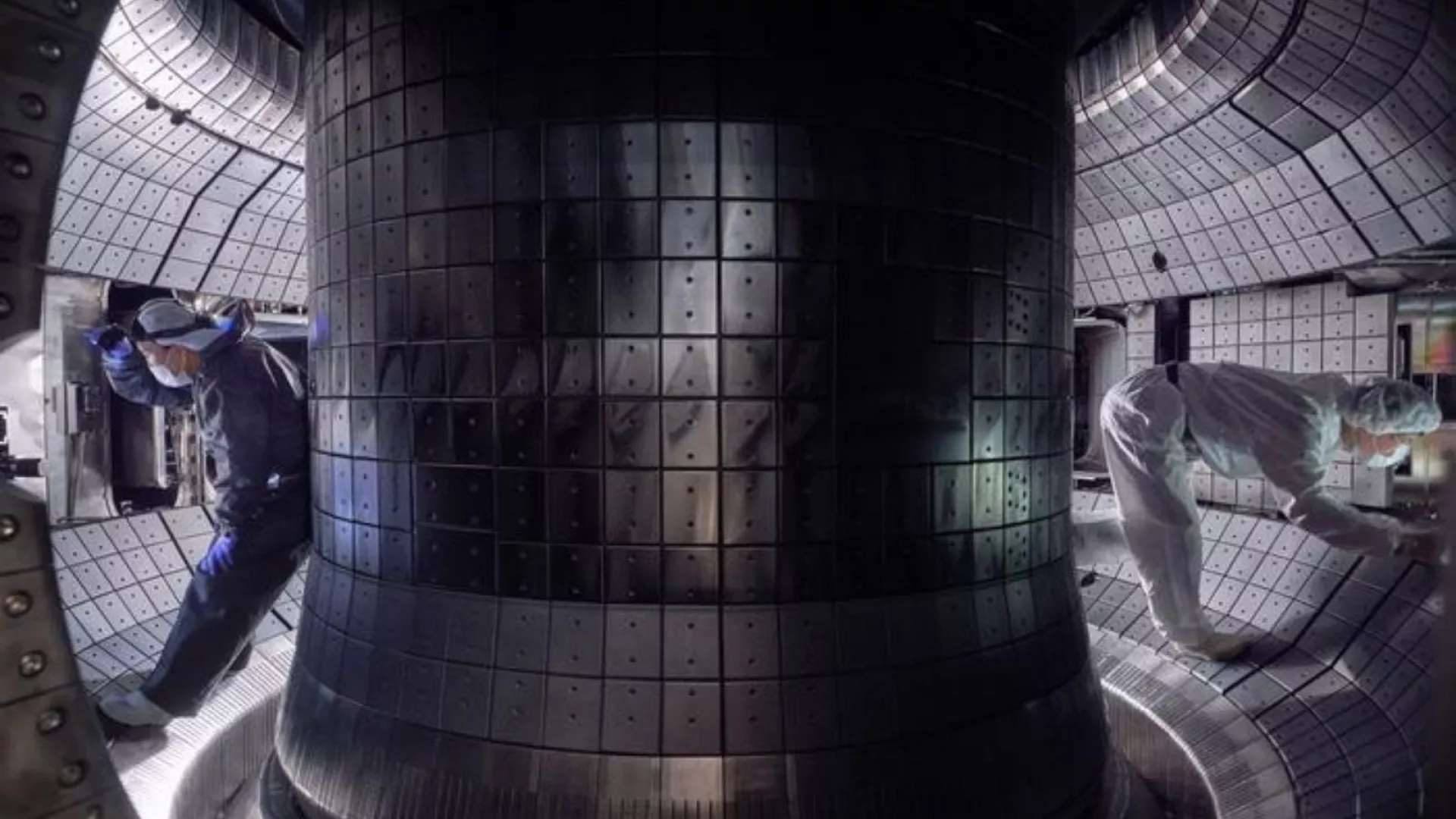South Korea has made a significant breakthrough in nuclear fusion, setting a new world record. This groundbreaking experiment harnesses the power of fusing atomic nuclei. By mimicking the sun's energy production process, the innovation offers a promising pathway toward clean and virtually limitless energy.
Solar energy has long been a focal point of scientific inquiry, with researchers striving to unravel its mysteries and harness its potential to meet growing energy demands. As awareness of the need for clean energy sources intensifies, so too does the imperative to develop advanced solar technologies.
The world faces a pressing energy crisis, balancing the need for abundant power with the imperative to protect our planet. While fossil fuels have been the cornerstone of modern civilization, their environmental toll has spurred a global search for sustainable alternatives.
South Korean researchers have turned their attention to the Sun as a monumental nuclear fusion reactor. Breaking new ground, scientists at the Korea Superconducting Tokamak Advanced Research (KSTAR) centre have pondered the possibility of replicating stellar energy within a laboratory setting. They have inquired into the feasibility of generating electricity from reactions analogous to those occurring in the Sun, but without producing any carbon footprint or radioactive waste.
Fundamentally, the sun generates its immense heat and light through the fusion of lightweight atoms, such as hydrogen, into heavier elements, a process known as nuclear fusion. Researchers are striving to replicate this phenomenon on Earth.
South Korea has embarked on an ambitious project to replicate the core processes of our sun, marking a groundbreaking advancement in nuclear fusion research. By subjecting hydrogen atoms to immense pressure and temperature, scientists aim to fuse these atoms into helium, releasing vast amounts of energy without producing greenhouse gases or long-lasting radioactive waste. This fusion process differs significantly from nuclear fission in that it does not generate unstable nuclei or rely on chain reactions. Moreover, the heating and confinement systems are external, and any disruption to the reactor's operating conditions would result in an immediate, self-regulated shutdown, halting energy production without external intervention.
This is not your typical experiment. Fusion necessitates the generation of heat so intense that it is difficult to comprehend. In essence, it is an attempt to harness a force of infinite potential.
The experiment employs a tokamak device, colloquially referred to as a 'torus.' This apparatus is shaped like a ring and utilizes powerful magnetic fields to confine extremely hot plasma. The term 'extremely hot' in this context signifies temperatures exceeding 100 million degrees Celsius—a temperature that a tokamak reactor has successfully attained and sustained for 48 seconds, surpassing the previous record of 31 seconds set in 2021.
Research into nuclear fusion and plasma physics is being pursued concurrently in over 50 countries. Recently, with the support of multiple nations, southern France has become the site of ITER, an international experimental thermonuclear reactor designed to produce a continuous 500 megawatts of power at a scale comparable to a commercial power plant.
While the pursuit of clean energy is undoubtedly a marathon, nuclear fusion, despite its promising potential, is not a sprinter. Widespread adoption and commercialization may be decades away due to the need for complex infrastructure, colossal structures, and uncompromisingly precise standards and practices. Furthermore, numerous technical challenges must be overcome, such as producing sufficient quantities of essential elements like tritium and developing materials capable of withstanding extreme temperatures without degradation.
Furthermore, the field of nuclear fusion research is currently largely confined to specialized academic settings. Consequently, a robust approach to this challenge must originate from within this domain. A significant breakthrough in this innovation could not only attract talented individuals but also stimulate job creation.
While this emerging technology holds great promise for addressing climate change, it is important to note that it will not be a panacea. Unforeseen challenges, high costs, and the need for continued efforts in waste management and emissions reduction may arise. Governments adopting this approach must carefully balance the aspirations of the future with the realities of the present.
A significant advantage of fusion is that its primary fuel, hydrogen isotopes, can be extracted from seawater, ensuring an almost inexhaustible supply. Moreover, the abundance of lithium, another essential element, further enhances the feasibility of this energy source.
The successful implementation of this endeavour will critically depend on international cooperation, resource allocation, and rapid technological advancement. Nuclear fusion holds the potential to fulfil growing energy requirements and provide immediate environmental advantages, including improved air quality and reduced climate change.
Tokamak developers are aiming to achieve a five-minute sustained fusion reaction by 2026, laying the groundwork for future fusion reactors.
References:
- https://www.euronews.com/next/2024/04/04/koreas-artificial-sun-achieves-a-record-48-seconds-at-100-million-degrees-why-does-it-matt#:~:text=Next%20Tech%20News-,Korea's%20'artificial%20sun'%20achieves%20a%20record%2048%20seconds%20at%20100,Why%20does%20it%20matter%3F&text=Korea's%20'artificial%20sun'%2C%20KSTAR,step%20in%20nuclear%20fusion%20research .
- https://www.energy.gov/science/doe-explainstokamaks
- https://www.iaea.org/topics/energy/fusion/faqs#:~:text=What%20are%20the%20effects%20of,gas%20emissions%20or%20global%20warming .
- https://www.iaea.org/newscenter/news/what-is-nuclear-fusion
- https://www.scientificamerican.com/article/what-is-the-future-of-fusion-energy /
- https://www.space.com/nuclear-fusion-reactor-south-korea-runs-48-seconds






